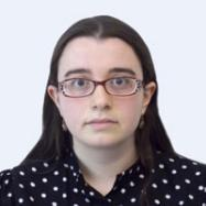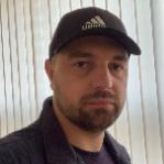International Journal of Computer Network and Information Security (IJCNIS)
IJCNIS Vol. 13, No. 3, 8 Jun. 2021
Cover page and Table of Contents: PDF (size: 309KB)
Novel Certification Method for Quantum Random Number Generators
Full Text (PDF, 309KB), PP.28-38
Views: 0 Downloads: 0
Author(s)
Index Terms
Information security, cryptography, quantum random number generator, randomness
Abstract
Random numbers have many uses, but finding true randomness is incredibly difficult. Therefore, quantum mechanics is used, using the essentially unpredictable behavior of a photon, to generate truly random numbers that form the basis of many modern cryptographic protocols. It is essential to trust cryptographic random number generators to generate only true random numbers. This is why certification methods are needed which will check both the performance of our device and the quality of the random bits generated. Self-testing as well as device independent quantum random number generation methods are analyzed in the paper. The advantages and disadvantages of both methods are identified. The model of a novel semi self-testing certification method for quantum random number generators is offered in the paper. This method combines different types of certification approaches and is rather secure and efficient. The method is very important for computer science, because it combines the best features from self-testing and device independent methods. It can be used, when the random numbers’ entropy depends on the device and when it does not. In the related researches, these approaches are offered to be used separately, depending on the random number generator. The offered novel certification technology can be properly used, when the device is compromised or spoiled. The technology can successfully detect unintended irregularities, operational problems, abnormalities and problems in the randomization process. The offered mythology assists to eliminate problems related to physical devices. The offered system has the higher certification randomness security and is faster than self-testing approaches. The method is rather efficient because it implements the different certification approaches in the parallel threads. The offered techniques make the offered research must more efficient than the other existing approaches. The corresponding programming simulation is implemented by means of the simulation techniques.
Cite This Paper
Maksim Iavich, Tamari Kuchukhidze, Sergiy Gnatyuk, Andriy Fesenko, "Novel Certification Method for Quantum Random Number Generators", International Journal of Computer Network and Information Security(IJCNIS), Vol.13, No.3, pp.28-38, 2021. DOI: 10.5815/ijcnis.2021.03.03
Reference
[1] Herrero-Collantes, Miguel & Garcia-Escartin, Juan Carlos. (2016). Quantum Random Number Generators. Reviews of Modern Physics. 89. 10.1103/ RevModPhys.89.015004.
[2] Zhengbing Hu, Sergiy Gnatyuk, Tetiana Okhrimenko, Sakhybay Tynymbayev, Maksim Iavich, "High-Speed and Secure PRNG for Cryptographic Applications", International Journal of Computer Network and Information Security, Vol.12, No.3, pp.1-10, 2020.
[3] Post-Quantum Digital Signatures with Attenuated Pulse Generator; M. Iavich, R. Bocu, A. Arakelian, G. Iashvili; CEUR Workshop Proceedings, Vol. 2698, 2020.
[4] Improvement of Merkle Signature Scheme by Means of Optical Quantum Random Number Generators; M. Iavich, A. Gagnidze, G. Iashvili, T. Okhrimenko, A. Arakelian, A. Fesenko; Advances in Intelligent Systems and Computing, Vol. 1247, Springer, 2020.
[5] Ma, X., Yuan, X., Cao, Z., Qi, B., & Zhang, Z. (2016). Quantum random number generation.
[6] Chernov, P. S., Volkov, V. S., & Surovtsev, D. A. (2018). Towards Self-testing Quantum Random Number Generators in Integrated Design. In IOP Conference Series: Materials Science and Engineering, pp. 012087-012087.
[7] Lunghi, Tommaso, et al. Self-testing quantum random number generator. Physical review letters 114.15 (2015): 150501.
[8] Bowles, J., Quintino, M. T., & Brunner, N. (2014). Certifying the dimension of classical and quantum systems in a prepare-and-measure scenario with independent devices. Physical review letters, 112(14), 140407.
[9] Vallone, G., Marangon, D. G., Tomasin, M., & Villoresi, P. (2014). Quantum randomness certified by the uncertainty principle. Physical Review A, 90(5), 052327.
[10] Pironio, S., Acín, A., Massar, S., de La Giroday, A. B., Matsukevich, D. N., Maunz, P., ... & Monroe, C. (2010). Random numbers certified by Bell’s theorem. Nature, 464(7291), pp. 1021-1024.
[11] Pawłowski, M., & Brunner, N. (2011). Semi-device-independent security of one-way quantum key distribution. Physical Review A, 84(1), 010302.
[12] Vazirani, U. V., & Vidick, T. (2011). Certifiable Quantum Dice-Or, testable exponential randomness expansion. arXiv preprint arXiv:1111.6054.
[13] Kulikov, A., Jerger, M., Potočnik, A., Wallraff, A., & Fedorov, A. (2017). Realization of a quantum random generator certified with the Kochen-Specker theorem. Physical Review Letters, 119(24), 240501.
[14] Z. Hu, S. Gnatyuk, T. Okhrimenko, V. Kinzeryavyy, M. Iavich, Kh. Yubuzova, High-Speed Privaсy Amplification Method for Deterministic Quantum Cryptography Protocols Using Pairs of Entangled Qutrits, CEUR Workshop Proceedings, Vol. 2393, pp. 810-821, 2019.
[15] Pushpam Kumar Sinha, Sonali Sinha," The better pseudo-random number generator derived from the library function rand() in C/C++", International Journal of Mathematical Sciences and Computing, Vol.5, No.4, pp.13-23, 2019.
[16] K.Sundara Rao, Mrudula Singamsetti, Vuyyuru Tejaswi, " Design of Adder Using Quantum Cellular Automata", International Journal of Wireless and Microwave Technologies, Vol.9, No.6, pp. 11-18, 2019.
[17] Vladimir К. Voronov, "Quantum-dot Controlled Electronic Block Triggering a Quantum Computation Procedure", International Journal of Information Technology and Computer Science, Vol.12, No.2, pp.42-48, 2020.



